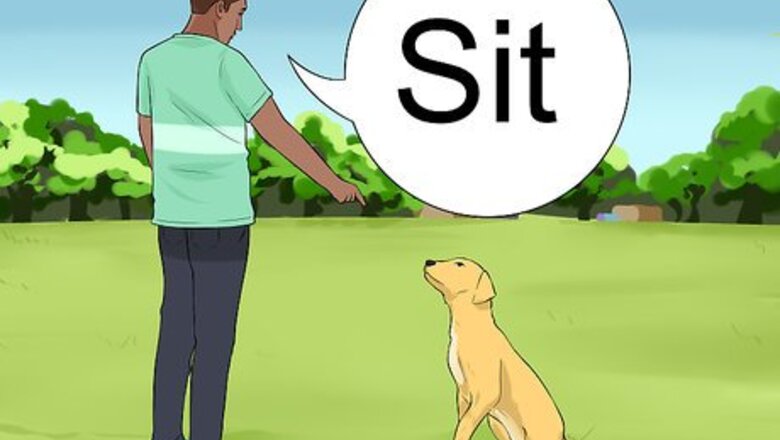
views
Teaching Your Dog Basic Commands
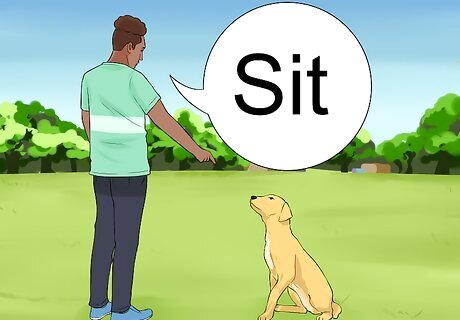
Teach your dog to sit. You should teach your dog the command “sit” so that you can make it stop before it attempts to run toward a car. Get on your puppy’s level. Hold a treat close to its nose and move the treat up so that he begins to lower his butt. Once its butt hits the floor give it the treat. Keep on telling your dog to “sit” as you do this. Eventually he will come to associate the action with the command. When your dog’s butt hits the ground, give it the treat and, if possible, make a noise with a clicker. If your dog associates the sound of the clicker with the treat, eventually the sound of the clicker will be a reward of its own. Praise your dog when it sits down correctly. Say nice things in a positive tone and pet your dog to reward it for being good. Repeat this trick several times a day until your dog does it even when it isn’t given a treat.
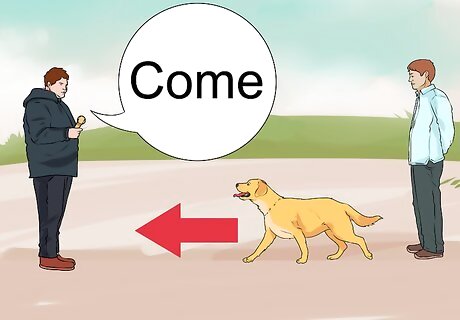
Teach your dog to come when you call. Getting your dog to run back to you can save its life in an emergency. To train your dog, try getting a second person to restrain it as you call its name and offer a treat or toy. When the second person releases your dog, use the call “come.” Your dog will learn to associate the word “come” with running back to you. It is easiest for your dog to pick up these commands when it is a puppy, but commands should be reinforced regularly throughout its life. Practice using this and other commands on nearly a daily basis. Never use the call “come” when you intend to scold your dog. If your dog associates the command with negative memories, it is less likely to respond to it. In general, positive reinforcement is more effective and humane than scolding your dog.
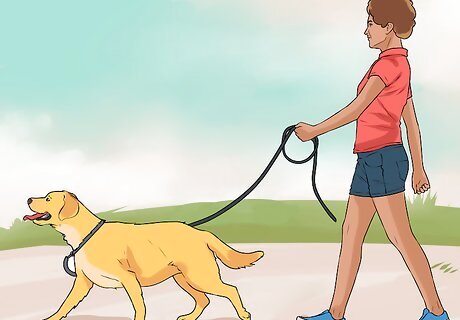
Train your dog for loose leash walking. Your dog needs to learn to follow your lead on its leash. Never allow it to pull you. If it does pull on its leash, stop and command it to sit. After getting your dog to sit, consider walking in the opposite direction. Over time, your dog should learn that rushing ahead of you will only make it harder for it to get where it wants to be.
Safely Acclimating Your Dog to Cars
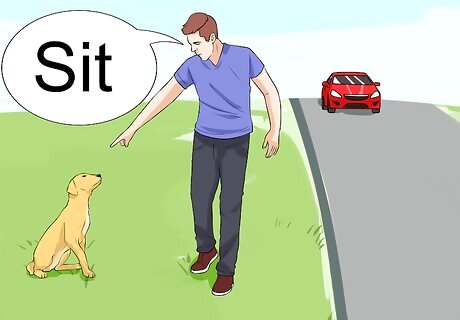
Teach your dog to sit by the road. With your dog on a leash, give it a command like “sit” as a car approaches. If it sits appropriately as the car passes, make a noise with your clicker and give it a treat. You will probably need to start far away from the road to limit the attraction of the cars. If your dog is having trouble, try a command that might better get your dog’s attention. Teach your dog “find it” and then drop treats in front of it. Your dog will hopefully be too busy finding and eating treats to give much thought to cars.
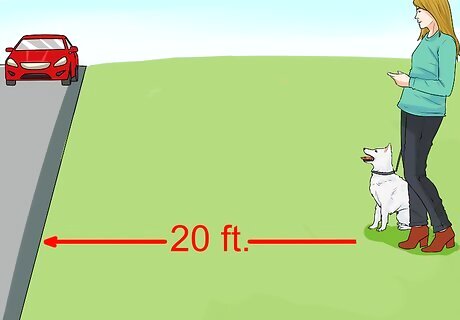
Practice your trip closer to the road each time. Your dog will be less excitable if it is standing instead of walking. It will also be less excitable further away from the road. So, start off stationary, 15 or 20 feet from the road. If your dog performs the trick without getting distracted, try it the next day a couple of feet closer to the road. Don’t expect your dog to learn this trick immediately. Try four or five sessions, fifteen minutes long. Every time your dog is rewarded for correctly following its command, it will develop a stronger positive association with staying away from the road.
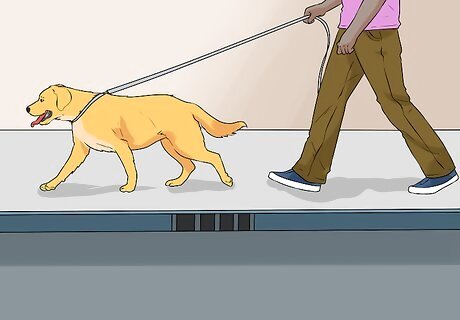
Walk near the road. Once your dog has successfully learned to sit as a car passes, try walking along the road. If your dog can manage this, move closer to the road. Your dog will be more tempted to chase the car the closer it gets, but you should work to desensitize it to progressively more exciting stimuli. Give your dog a command as the cars pass. If your dog follows the command, use your clicker and give it a treat. As time goes on try using just your clicker. When your dog looks at the car, make a clicking sound. When it looks away, give it a treat and press the clicker again. If you don’t have a clicker, just make a sound as the car passes and show your dog a treat. Make your dog walk toward you before you give it the treat. After the car passes, give it a couple more treats.
Protecting a Dog You Can’t Train
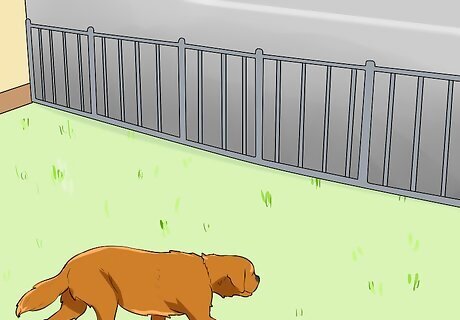
Build a fence. The best way to ensure that your dog doesn’t chase a car when you are not around is to build a fence. If you can’t install a physical fence, you can bury an electric fence around the perimeter of your property. The fence will shock your dog whenever it tries to chase a car. The average price of an electric fence is approximately $1000.
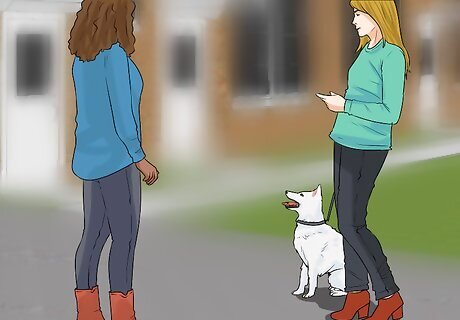
Reach out to a professional dog trainer. Became many dogs are fascinated by cars, moderate positive reinforcement often is not enough to convince them to change their behavior. Sometimes you might have to resort to a professional dog trainer, who has mastered more advanced techniques to change behavior. Several sessions with a dog trainer might cost between $300 to $600.



















Comments
0 comment